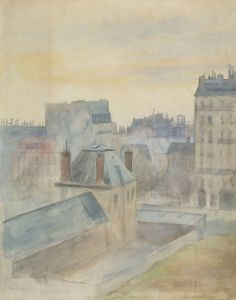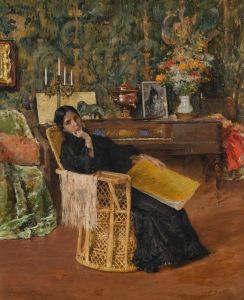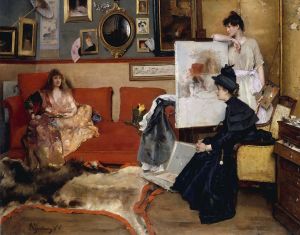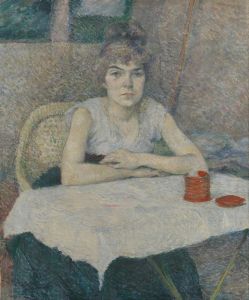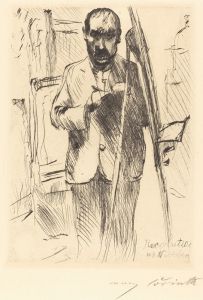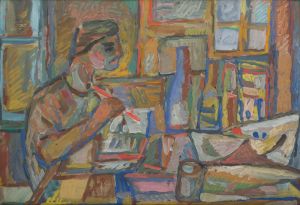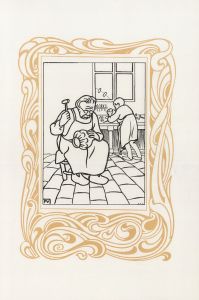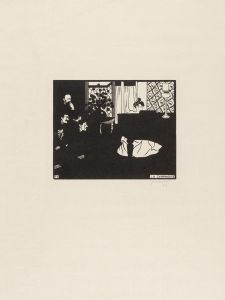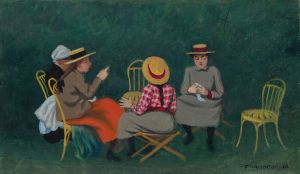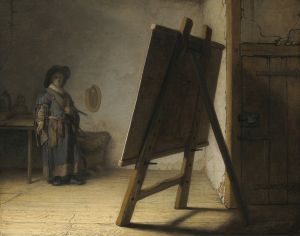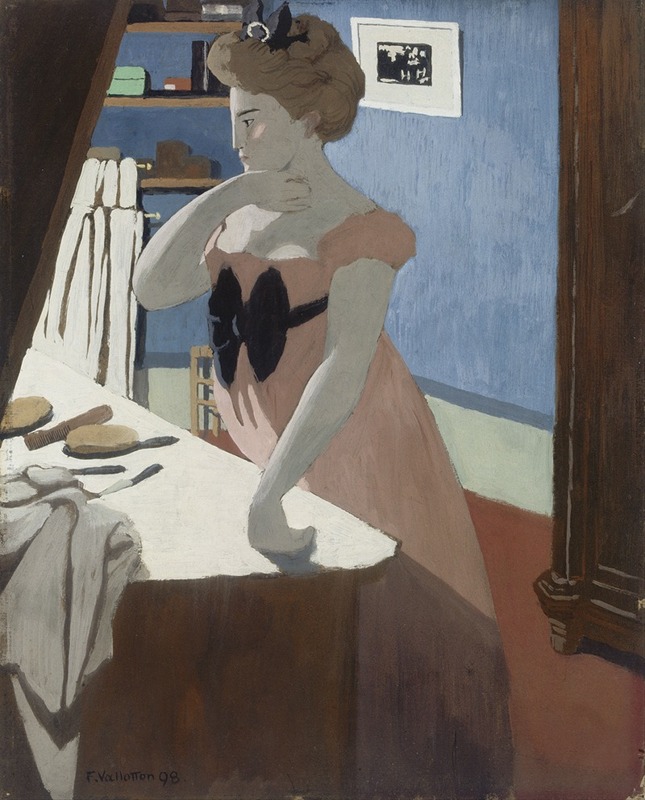
Misia à sa coiffure Misia at Her Dressing Table
A hand-painted replica of Félix Vallotton’s masterpiece Misia à sa coiffure Misia at Her Dressing Table, meticulously crafted by professional artists to capture the true essence of the original. Each piece is created with museum-quality canvas and rare mineral pigments, carefully painted by experienced artists with delicate brushstrokes and rich, layered colors to perfectly recreate the texture of the original artwork. Unlike machine-printed reproductions, this hand-painted version brings the painting to life, infused with the artist’s emotions and skill in every stroke. Whether for personal collection or home decoration, it instantly elevates the artistic atmosphere of any space.
Félix Vallotton's painting "Misia à sa coiffure" (Misia at Her Dressing Table) is a notable work by the Swiss-French painter, created in 1898. Vallotton was associated with the Nabis, a group of avant-garde Post-Impressionist artists who were active in Paris during the late 19th century. The Nabis were known for their emphasis on symbolism, flat colors, and decorative elements, which are evident in Vallotton's work.
The subject of the painting, Misia Godebska, was a prominent figure in the Parisian cultural scene at the time. She was a Polish-born pianist and a muse to many artists, musicians, and writers. Misia was married to Thadée Natanson, the editor of the influential literary magazine "La Revue Blanche," which played a significant role in promoting the avant-garde art and literature of the period. Her salon was a gathering place for artists and intellectuals, and she was known for her beauty, charm, and wit.
In "Misia à sa coiffure," Vallotton captures Misia in an intimate and personal moment, seated at her dressing table. The painting is characterized by Vallotton's distinctive style, which combines elements of realism with a more abstract, decorative approach. The composition is carefully structured, with a focus on the interplay of light and shadow, and the use of bold, flat colors that create a sense of depth and texture.
Vallotton's portrayal of Misia is both sensitive and enigmatic, reflecting her complex personality and the role she played in the artistic community of the time. The painting is notable for its attention to detail, particularly in the depiction of Misia's reflection in the mirror, which adds a layer of introspection and self-awareness to the work. The mirror serves as a metaphor for self-examination and the duality of public and private personas.
The painting also reflects Vallotton's interest in the themes of intimacy and domesticity, which were common in his work. He often explored the dynamics of personal relationships and the private lives of his subjects, using his art to delve into the psychological and emotional aspects of human experience.
"Misia à sa coiffure" is an example of Vallotton's ability to capture the essence of his subjects while also experimenting with form and composition. The painting is part of a larger body of work that demonstrates his versatility and innovation as an artist. Vallotton's contributions to the Nabis movement and his unique approach to painting have earned him a significant place in the history of modern art.
Today, "Misia à sa coiffure" is appreciated not only for its artistic merit but also for its historical significance, offering insight into the cultural milieu of fin-de-siècle Paris and the influential figures who shaped it. The painting remains an important work in Vallotton's oeuvre, celebrated for its beauty, complexity, and the intriguing portrayal of one of the era's most fascinating muses.





